The Impact of Hysteresis Effect on Device Characteristic and Reliability for Various Fin-Widths Tri-Gate Hf0.5Zr0.5O2 Ferroelectric FinFET
Abstract
1. Introduction
2. Materials and Methods
3. Results
4. Conclusions
Author Contributions
Funding
Data Availability Statement
Acknowledgments
Conflicts of Interest
References
- Salahuddin, S.; Datta, S. Use of Negative Capacitance to Provide Voltage Amplification for Low Power Nanoscale Devices Low Power Nanoscale Devices. Nano Lett. 2008, 8, 405–410. [Google Scholar] [CrossRef] [PubMed]
- Lyu, X.; Si, M.; Shrestha, P.R.; Cheung, K.P.; Ye, P.D. First direct measurement of sub-nanosecond polarization switching in ferroelectric hafnium zirconium oxide. In Proceedings of the IEEE International Electron Device Meeting, San Francisco, CA, USA, 9–11 December 2019. [Google Scholar] [CrossRef]
- Sharma, A.A.; Doyle, B.; Yoo, H.J.; Tung, I.C.; Kavalieros, J.; Metz, M.V.; Reshotko, M.; Majhi, P.; Brown-Heft, T.; Chen, Y.J.; et al. High Speed Memory Operation in Channel-Last, Back-gated Ferroelectric Transistors, In Proceedings of the IEEE International Electron Device Meeting, San Francisco, CA, USA, 12–18 December 2020. [CrossRef]
- Wang, X.; Liu, C.; Chen, Y.; Wu, G.; Yan, X.; Huang, H.; Wang, P.; Tian, B.; Hong, Z.; Wang, Y.; et al. Ferroelectric FET for nonvolatile memory application with two-dimensional MoSe2 channels. 2D Mater. 2017, 4, 025036. [Google Scholar] [CrossRef]
- Lee, C.C.; Hsieh, D.R.; Li, S.W.; Kuo, Y.S.; Chao, T.S. Hysteresis-Free Gate-All-Around Stacked Poly-Si Nanosheet Channel Ferroelectric HfxZr1-xO2 Negative Capacitance FETs With Internal Metal Gate and NH3 Plasma Nitridation. IEEE Trans. Electron Devices 2022, 69, 1512–1518. [Google Scholar] [CrossRef]
- Khan, A.I.; Keshavarzi, A.; Datta, S. The future of ferroelectric field-effect transistor technology. Nat. Electron. 2020, 3, 588–597. [Google Scholar] [CrossRef]
- Kao, M.Y.; Salahuddin, S.; Hu, C. Negative capacitance enables GAA scaling VDD to 0.5 V. Solid-State Electron. 2021, 181–182, 108010. [Google Scholar] [CrossRef]
- Gupta, A.K.; Raman, A.; Kumar, N. Design Considerations and Optimization of Electrostatic Doped Ferroelectric Nanotube Tunnel FET: Analog and Noise Analysis. Silicon 2022, 14, 10357–10373. [Google Scholar] [CrossRef]
- Solay, L.R.; Kumar, N.; Amin, S.I.; Kumar, P.; Anand, S. Design and performance analysis of gate-all-around negative capacitance dopingless nanowire tunnel field effect transistor. Semicond. Sci. Technol. 2022, 37, 115001. [Google Scholar] [CrossRef]
- Mah, S.K.; Ker, P.J.; Ahmad, I.; Zainul Abidin, N.F.; Ali Gamel, M.M. A Feasible Alternative to FDSOI and FinFET: Optimization of W/La2O3/Si Planar PMOS with 14 nm Gate-Length. Materials 2021, 14, 5721. [Google Scholar] [CrossRef] [PubMed]
- Yang, Y.L.; Zhang, W.; Yan, S.Y.; Yu, Y.H.; Fang, Z.Y.; Yeh, W.K. Study on device reliability for P-type FinFETs with different fin numbers. Vacuum 2019, 181, 109601. [Google Scholar] [CrossRef]
- Boukortt, N.E.I.; Lenka, T.R.; Patanè, S.; Crupi, G. Effects of Varying the Fin Width, Fin Height, Gate Dielectric Material, and Gate Length on the DC and RF Performance of a 14-nm SOI FinFET Structure. Electronics 2022, 11, 91. [Google Scholar] [CrossRef]
- Ko, M.D.; Sohn, C.W.; Baek, C.K.; Jeong, Y.H. Study on a Scaling Length Model for Tapered Tri-Gate FinFET Based on 3-D Simulation and Analytical Analysis. IEEE Trans. Electron Devices 2013, 60, 2721–2727. [Google Scholar] [CrossRef]
- Lin, C.L.; Hsiao, P.H.; Yeh, W.K.; Liu, H.W.; Yang, S.R.; Chen, Y.T.; Chen, K.M.; Liao, W.S. Effects of Fin Width on Device Performance and Reliability of Double-Gate n-Type FinFETs. IEEE Trans. Electron Devices 2013, 60, 3639–3644. [Google Scholar] [CrossRef]
- Ha, D.; Takeuchi, H.; Choi, Y.K.; King, T.J.; Bai, W.; Kwong, D.L.; Agarwal, A.; Ameen, M. Molybdenum-Gate HfO2 CMOS FinFET technology. In Proceedings of the IEEE International Electron Device Meeting, San Francisco, CA, USA, 13–15 December 2004. [Google Scholar] [CrossRef]
- Yan, S.C.; Wu, C.H.; Sun, C.J.; Lin, Y.W.; Yao, Y.J.; Wu, Y.C. Trench FinFET Nanostructure with Advanced Ferroelectric Nanomaterial HfZrO2 for Sub-60-mV/Decade Subthreshold Slope for Low Power Application. Nanomaterials 2022, 12, 2165. [Google Scholar] [CrossRef] [PubMed]
- De, S.; Aftab Baig, M.; Qiu, B.H.; Müller, F.; Le, H.H.; Lederer, M.; Kämpfe, T.; Ali, T.; Sung, P.J.; Su, C.J.; et al. Random and Systematic Variation in Nanoscale Hf0.5Zr0.5O2 Ferroelectric FinFETs: Physical Origin and Neuromorphic Circuit Implications. Front. Nanotech. 2021, 3, 826232. [Google Scholar] [CrossRef]
- Yeh, W.K.; Zhang, W.; Chen, P.Y.; Yang, Y.L. The Impact of Fin Number on Device Performance and Reliability for Multi-Fin Tri-Gate n- and p-type FinFET. IEEE Trans. Device Mater. Reliab. 2018, 18, 555–560. [Google Scholar] [CrossRef]
- Yang, Y.L.; Zhang, W.; Yeh, Y.K. Study on Intrinsic Hot Carrier Degradation of FinFETs with Different Stress Conditions and Fin Numbers by Decoupling PBTI Component. ECS J. Solid State Sci. Technol. 2020, 9, 033006. [Google Scholar] [CrossRef]
- Yeh, W.K.; Yang, L.Q.; Shen, C.H.; Kong, C.H.; Tseng, P.Y.; Yang, Y.L. Study on Negative Bias Temperature Instability Induced Degradation of P-Type FinFETs by Distinguishing Fin Top and Fin Sidewalls. ECS J. Solid State Sci. Technol. 2022, 11, 065005. [Google Scholar] [CrossRef]
- De, S.; Lu, D.D.; Le, H.H.; Mazumder, S.; Lee, Y.J.; Tseng, W.C.; Qiu, B.H.; Baig, M.A.; Sung, P.J.; Su, C.J.; et al. Ultra-Low Power Robust 3bit/cell Hf0.5Zr0.5O2 Ferroelectric FinFET with High Endurance for Advanced Computing-In-Memory Technology. In Proceedings of the Symposium on VLSI Technology, Kyoto, Japan, 13–19 June 2021; Available online: https://ieeexplore.ieee.org/document/9508674 (accessed on 11 August 2021).
- Wang, H.; Yang, M.; Huang, Q.; Zhu, K.; Zhao, Y.; Liang, Z.; Chen, C.; Wang, Z.; Zhong, Y.; Zhang, X.; et al. New Insights into the Physical Origin of Negative Capacitance and Hysteresis in NCFETs. In Proceedings of the IEEE International Electron Device Meeting, San Francisco, CA, USA, 1–5 December 2018. [Google Scholar] [CrossRef]
- Koval, V.; Viola, G.; Tan, Y. Biasing Effects in Ferroic Materials. In Ferroelectric Materials-Synthesis and Characterization; IntechOpen: London, UK, 2015. [Google Scholar] [CrossRef]
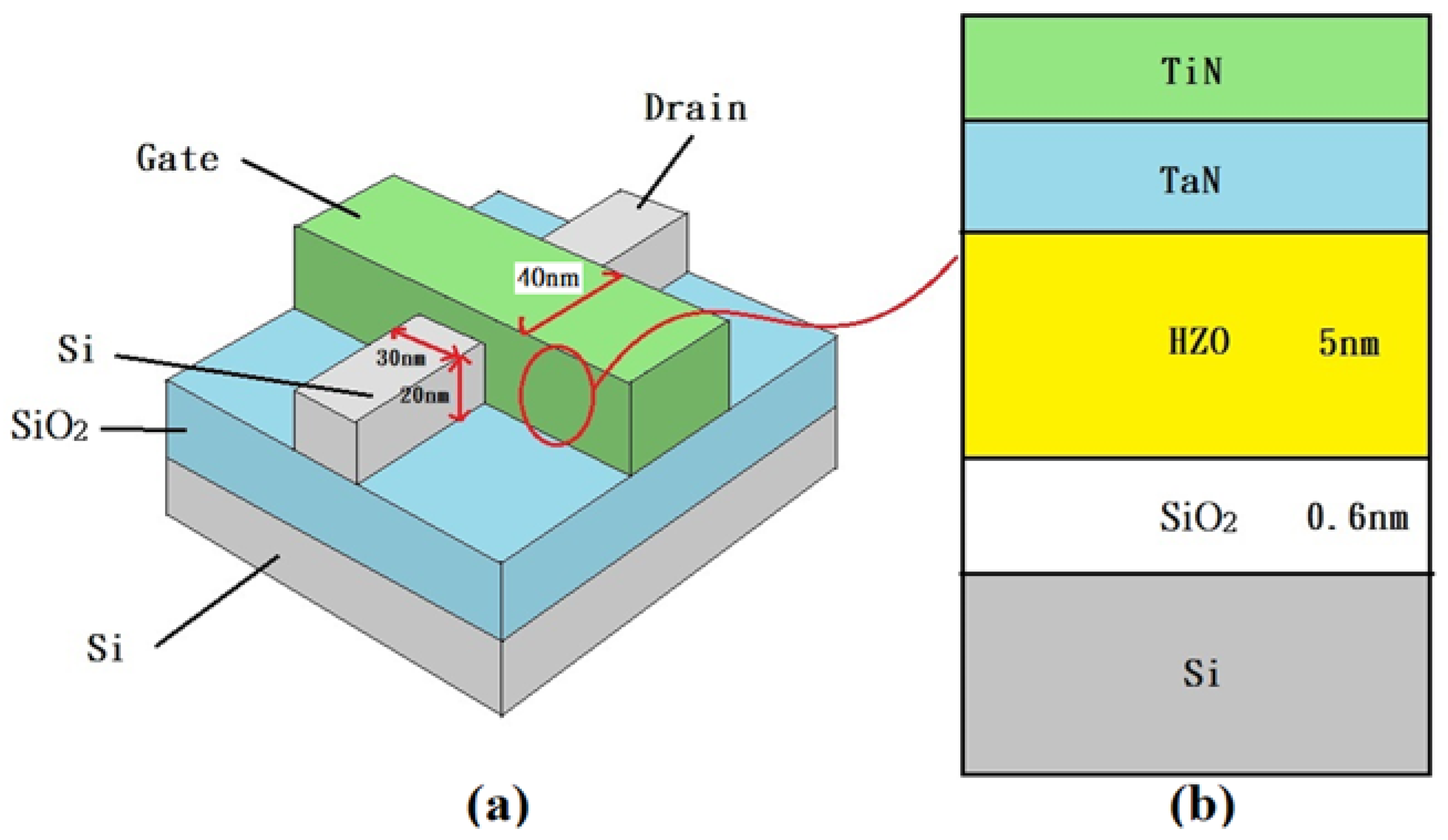
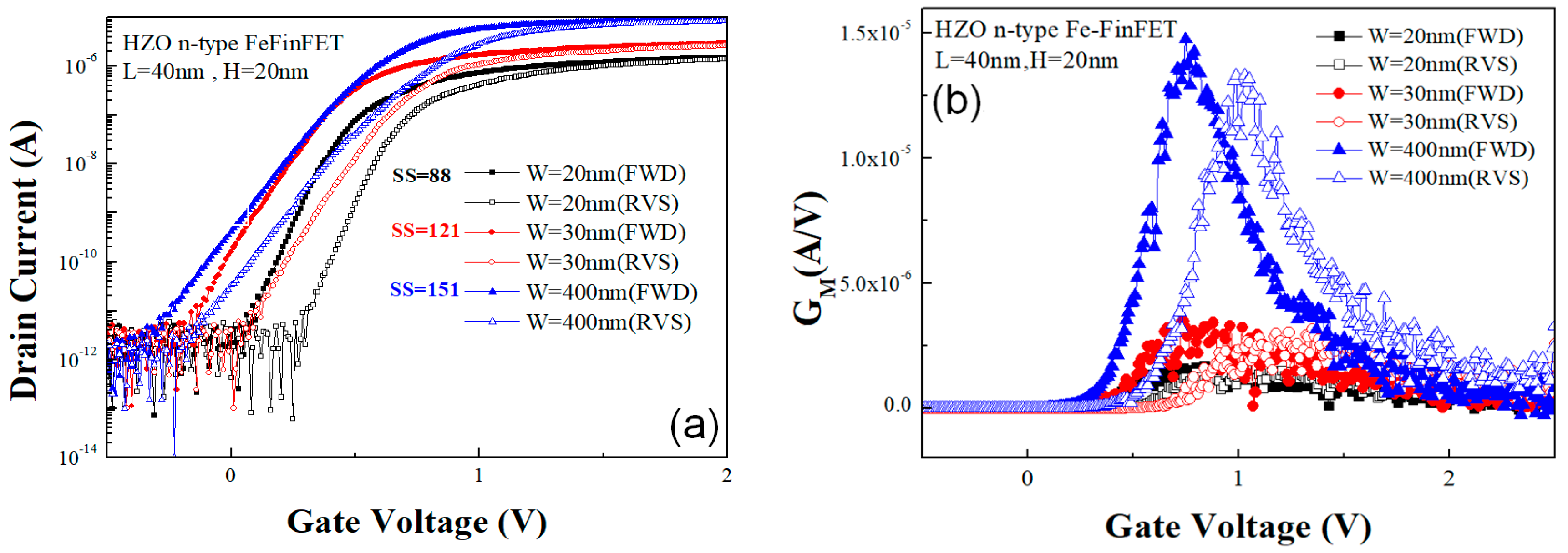
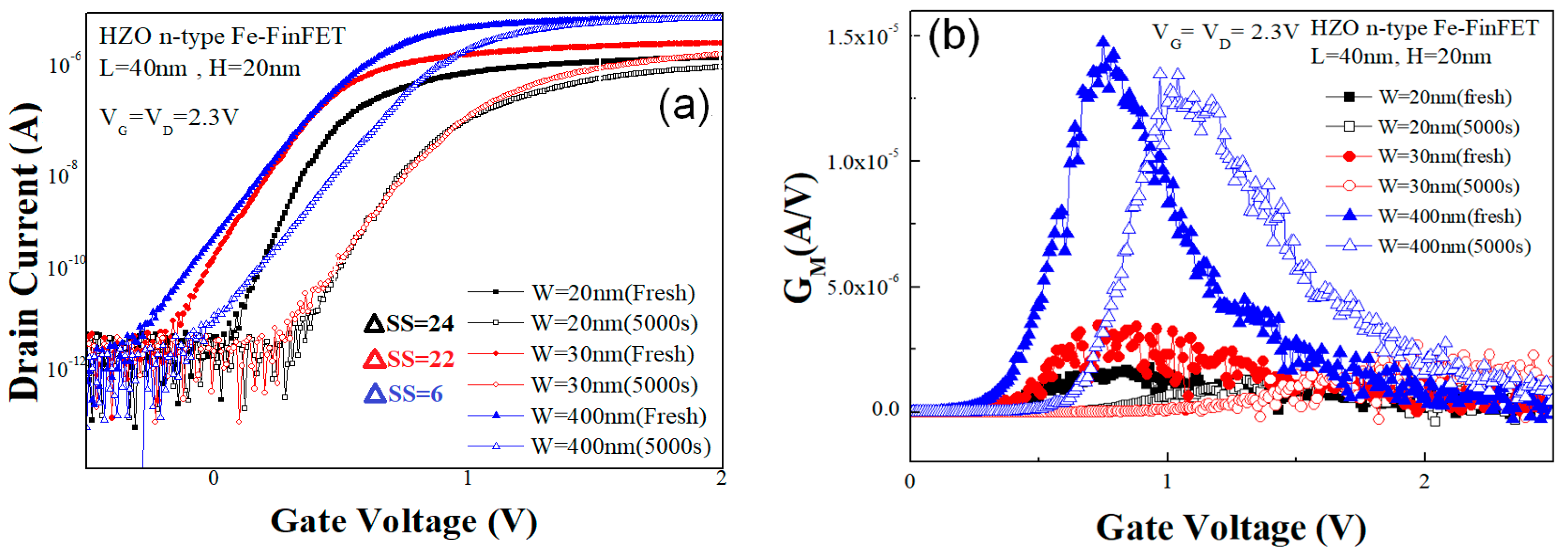
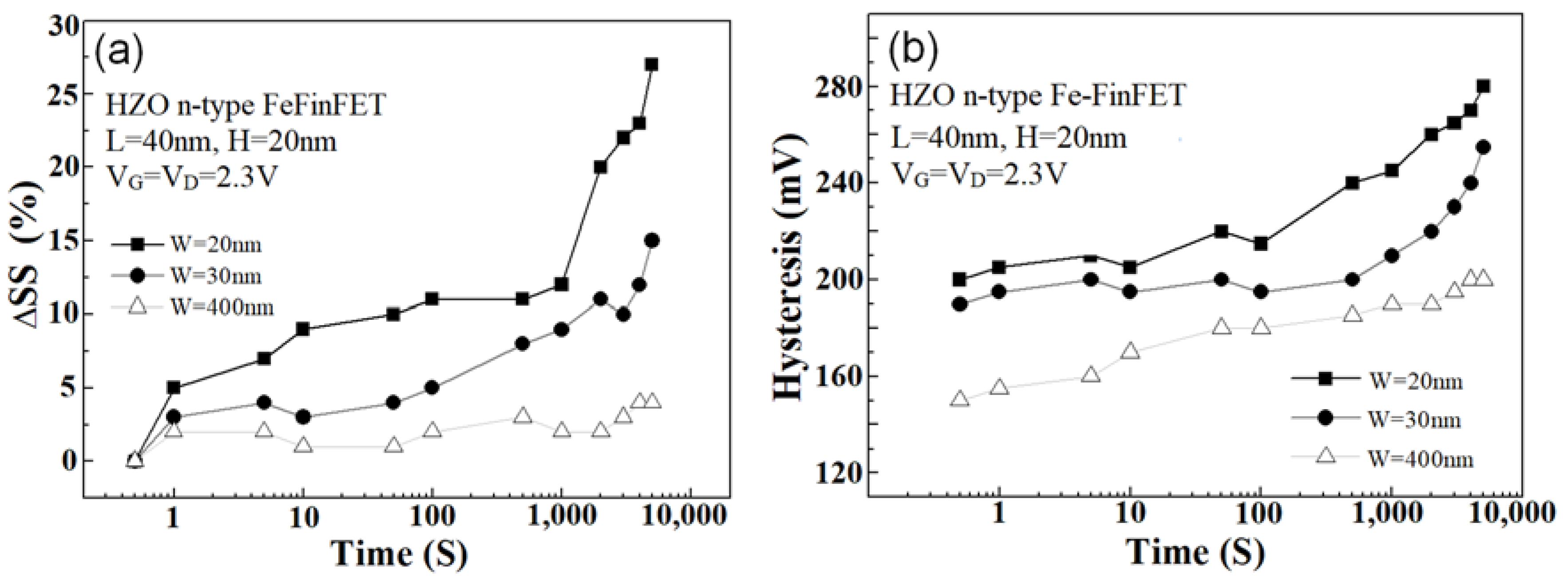
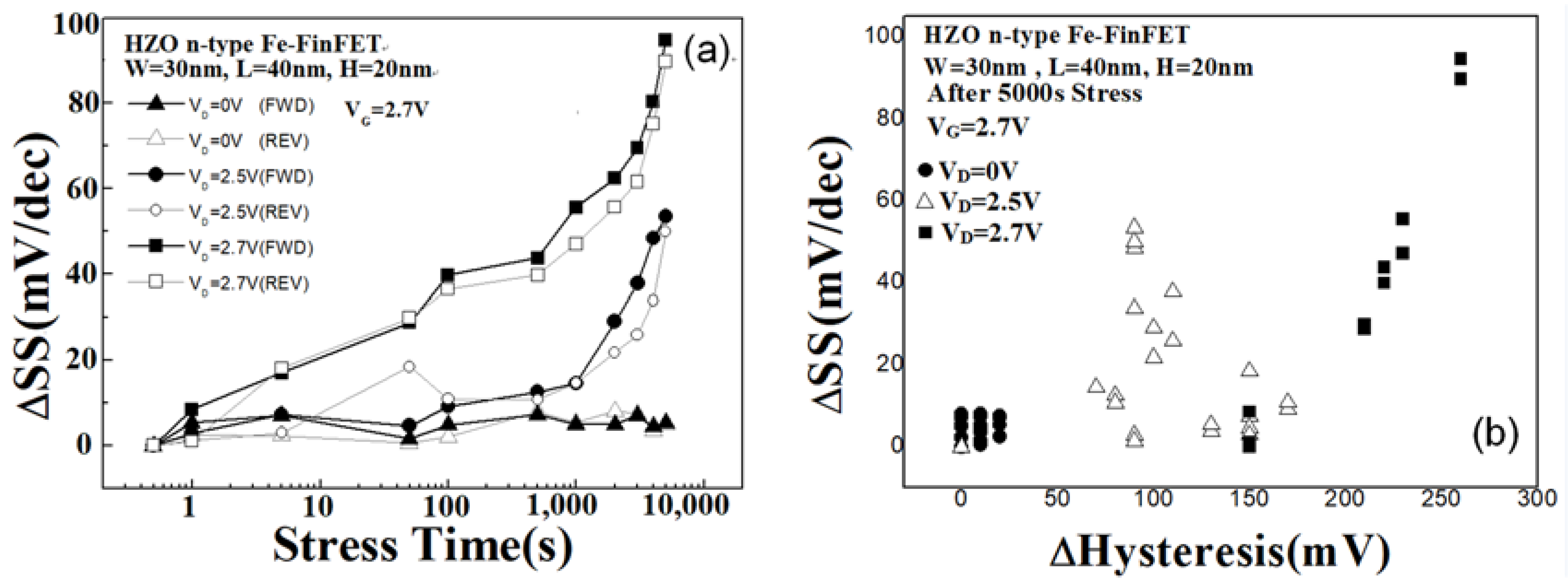
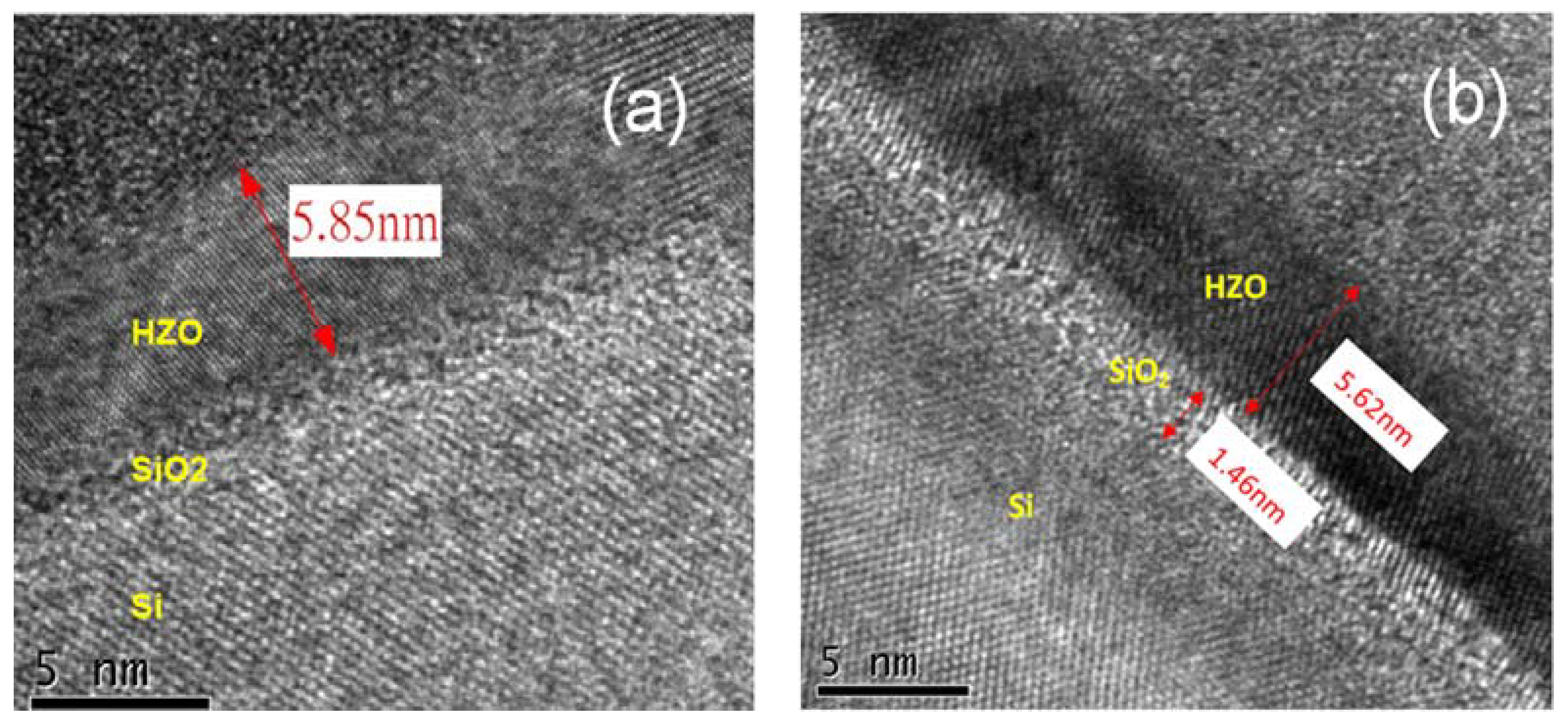
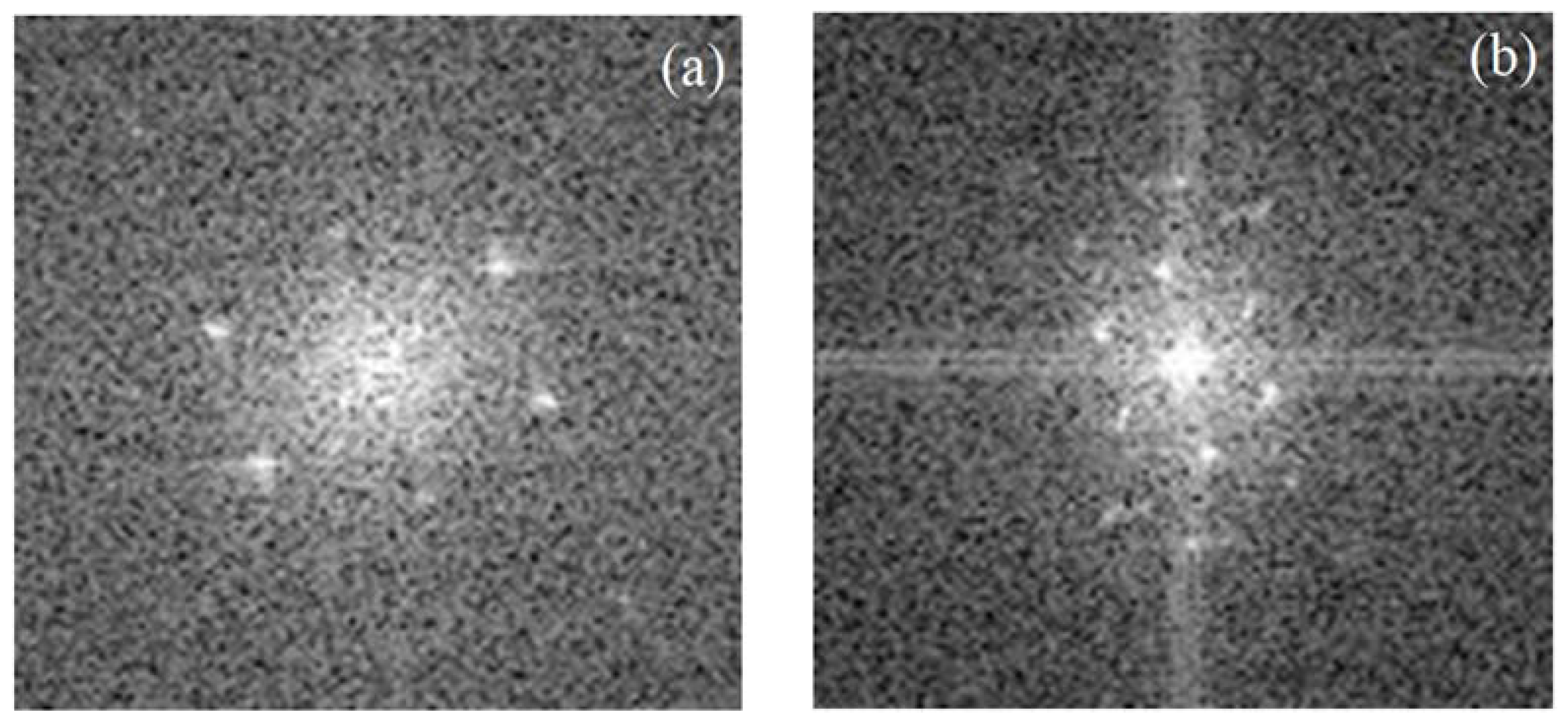
Disclaimer/Publisher’s Note: The statements, opinions and data contained in all publications are solely those of the individual author(s) and contributor(s) and not of MDPI and/or the editor(s). MDPI and/or the editor(s) disclaim responsibility for any injury to people or property resulting from any ideas, methods, instructions or products referred to in the content. |
© 2023 by the authors. Licensee MDPI, Basel, Switzerland. This article is an open access article distributed under the terms and conditions of the Creative Commons Attribution (CC BY) license (https://creativecommons.org/licenses/by/4.0/).
Share and Cite
Zhang, W.-Q.; Wu, P.-T.; Lin, Y.-H.; Yang, Y.-L. The Impact of Hysteresis Effect on Device Characteristic and Reliability for Various Fin-Widths Tri-Gate Hf0.5Zr0.5O2 Ferroelectric FinFET. Crystals 2023, 13, 628. https://doi.org/10.3390/cryst13040628
Zhang W-Q, Wu P-T, Lin Y-H, Yang Y-L. The Impact of Hysteresis Effect on Device Characteristic and Reliability for Various Fin-Widths Tri-Gate Hf0.5Zr0.5O2 Ferroelectric FinFET. Crystals. 2023; 13(4):628. https://doi.org/10.3390/cryst13040628
Chicago/Turabian StyleZhang, Wen-Qi, Po-Tang Wu, Yu-Heng Lin, and Yi-Lin Yang. 2023. "The Impact of Hysteresis Effect on Device Characteristic and Reliability for Various Fin-Widths Tri-Gate Hf0.5Zr0.5O2 Ferroelectric FinFET" Crystals 13, no. 4: 628. https://doi.org/10.3390/cryst13040628
APA StyleZhang, W.-Q., Wu, P.-T., Lin, Y.-H., & Yang, Y.-L. (2023). The Impact of Hysteresis Effect on Device Characteristic and Reliability for Various Fin-Widths Tri-Gate Hf0.5Zr0.5O2 Ferroelectric FinFET. Crystals, 13(4), 628. https://doi.org/10.3390/cryst13040628







